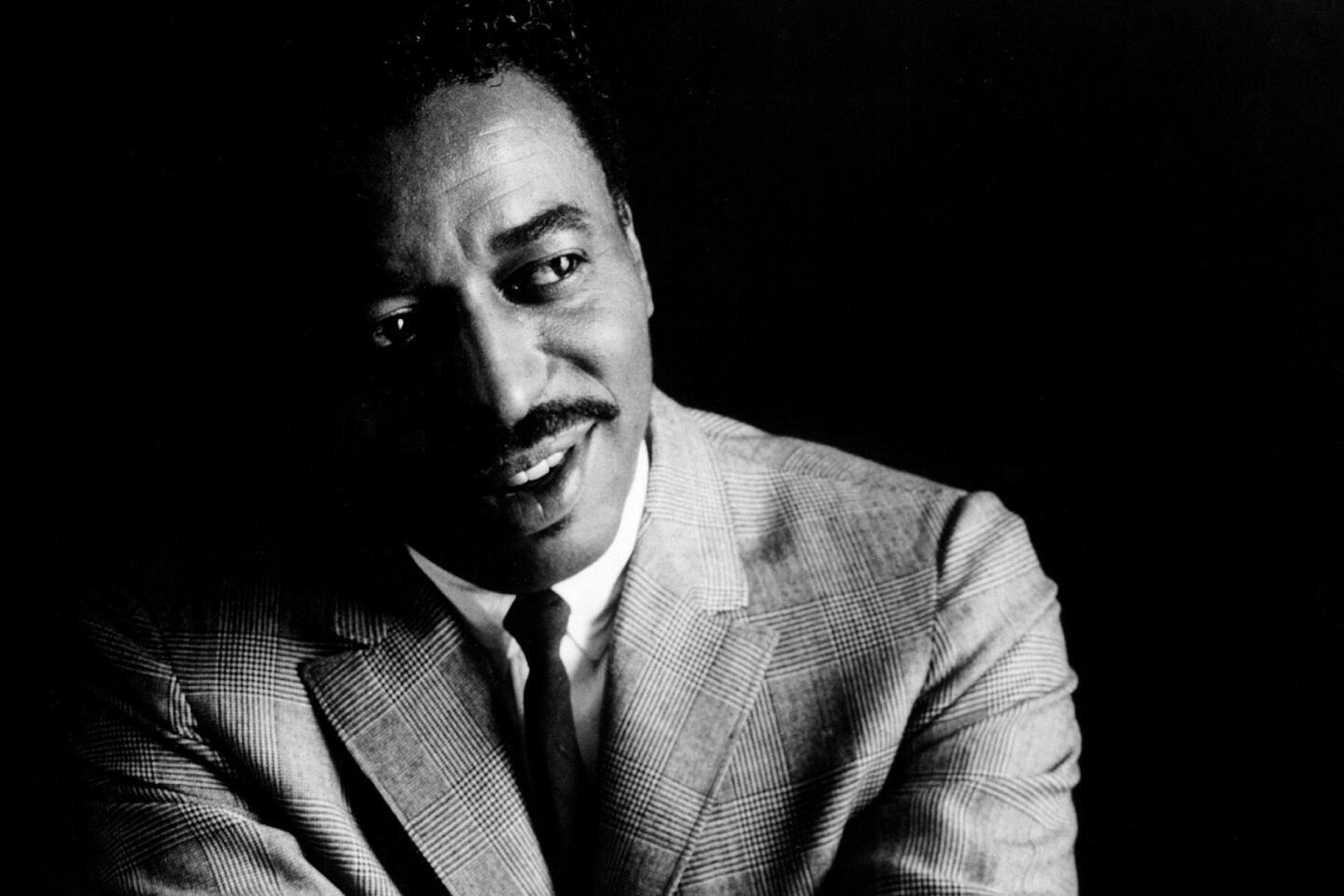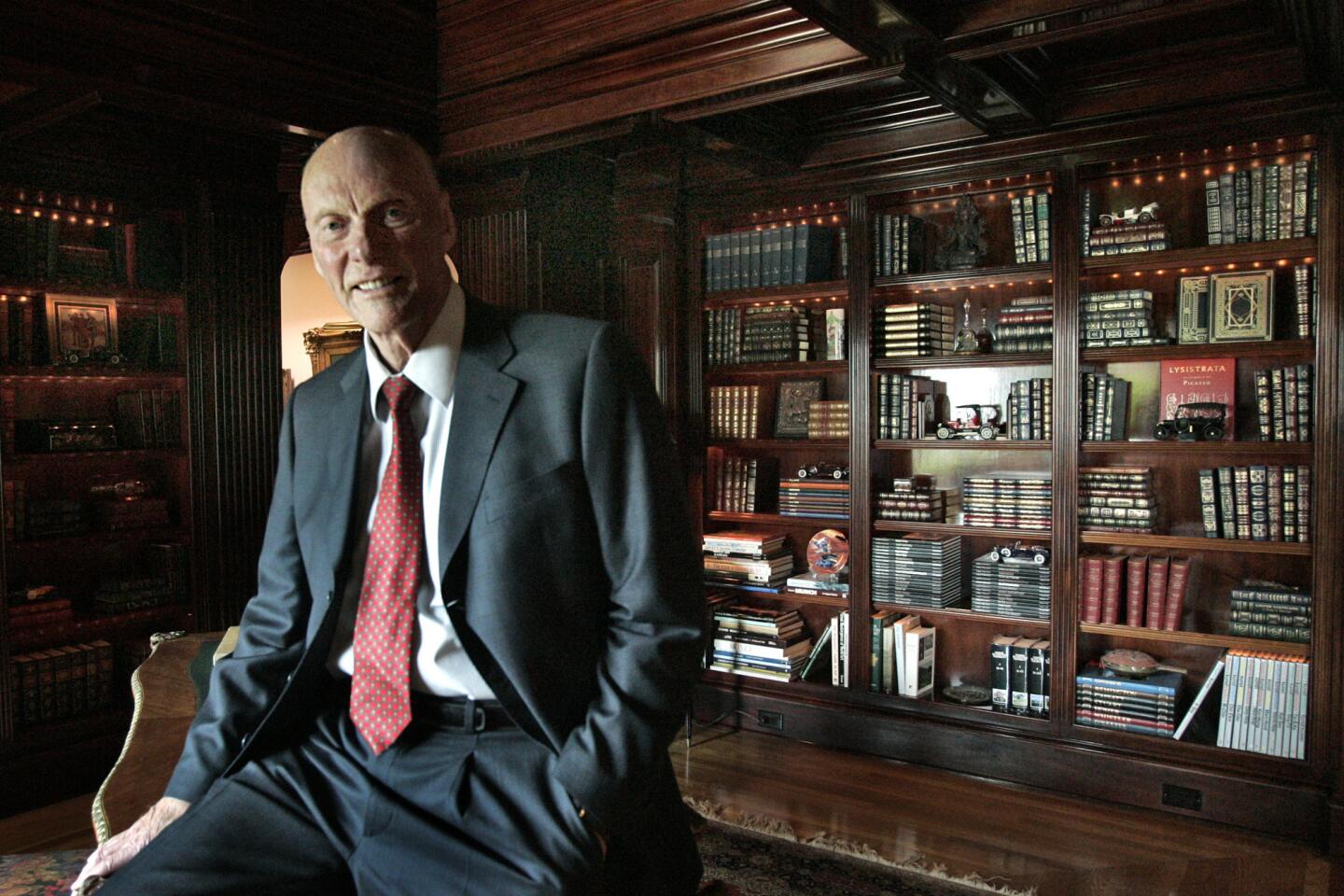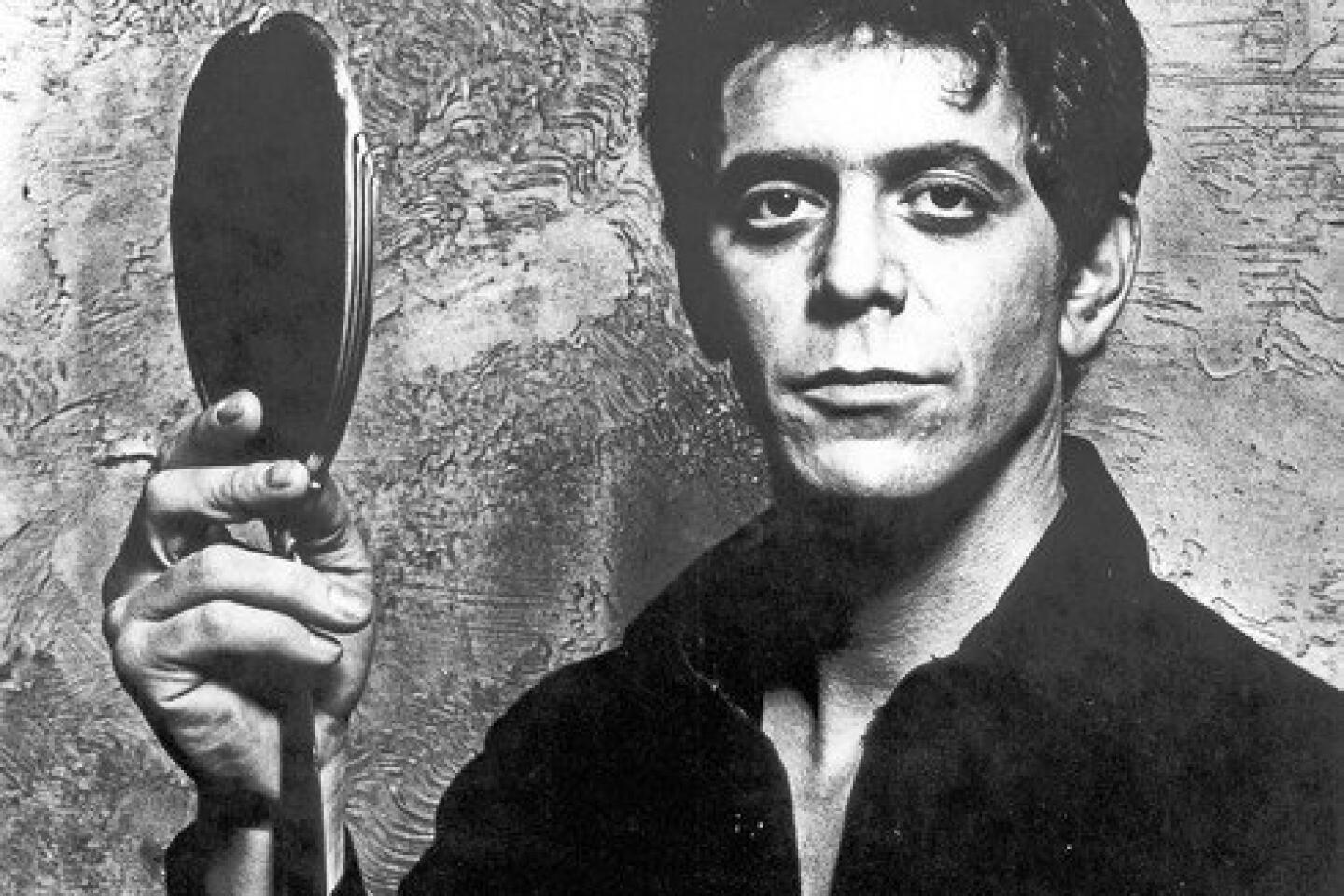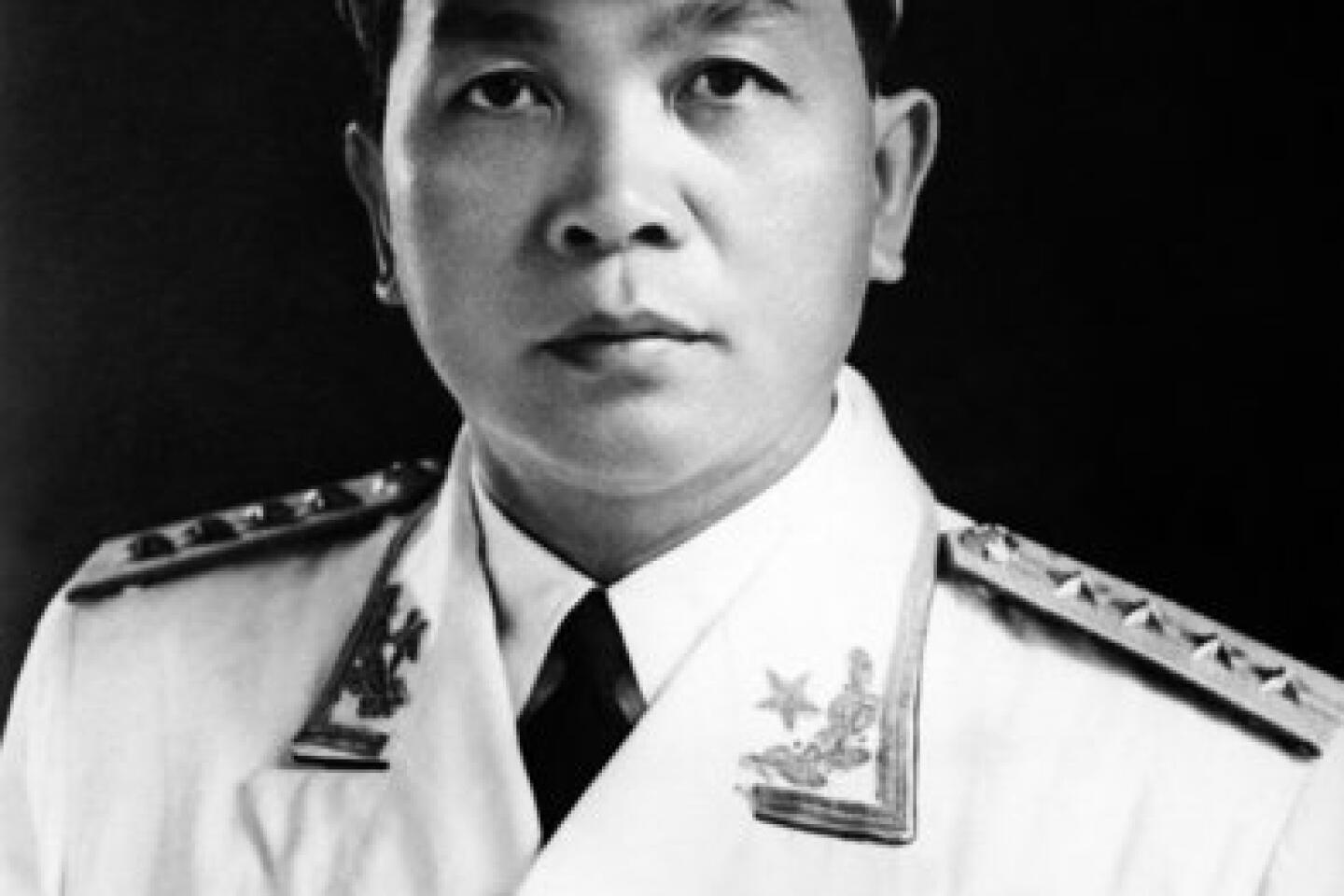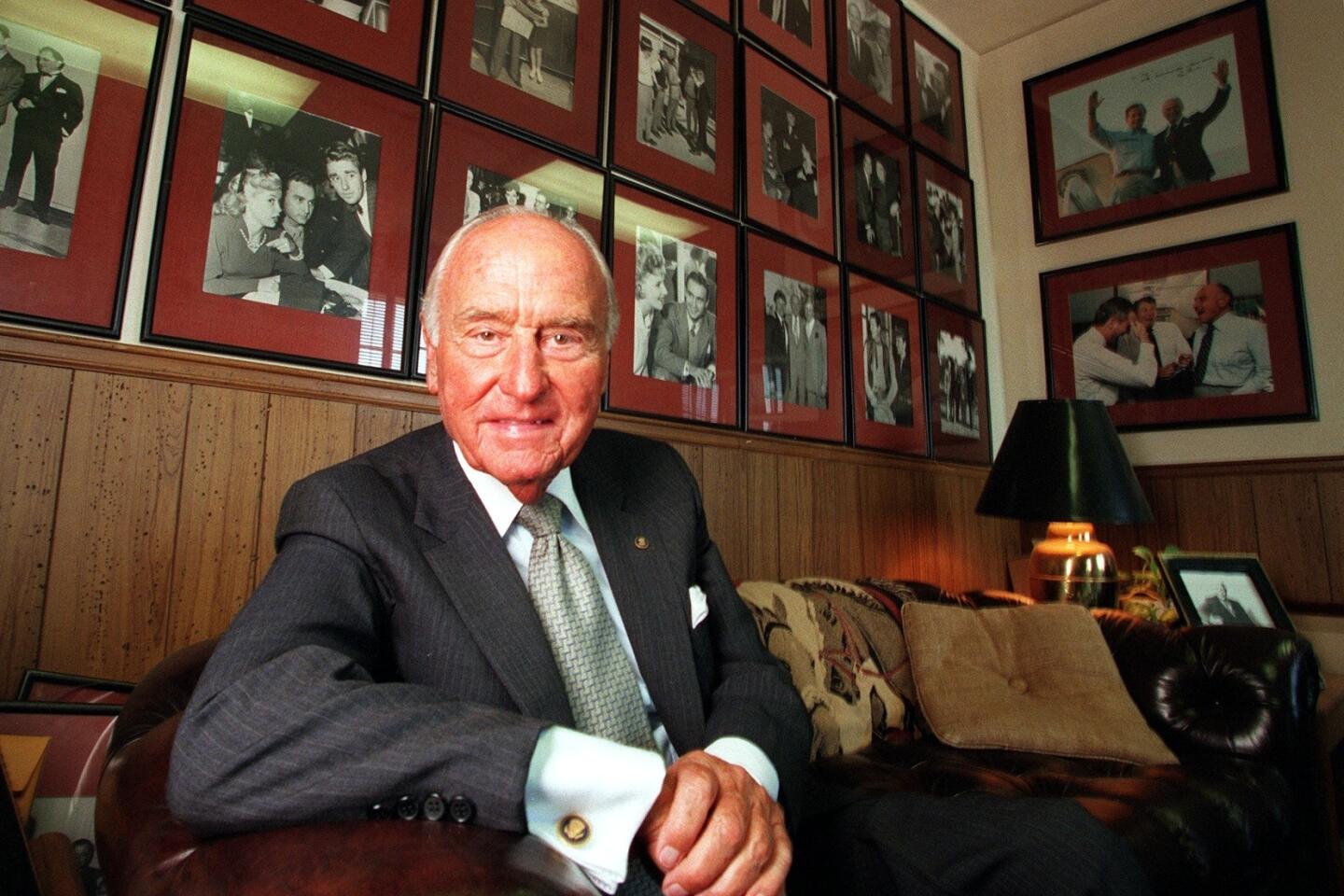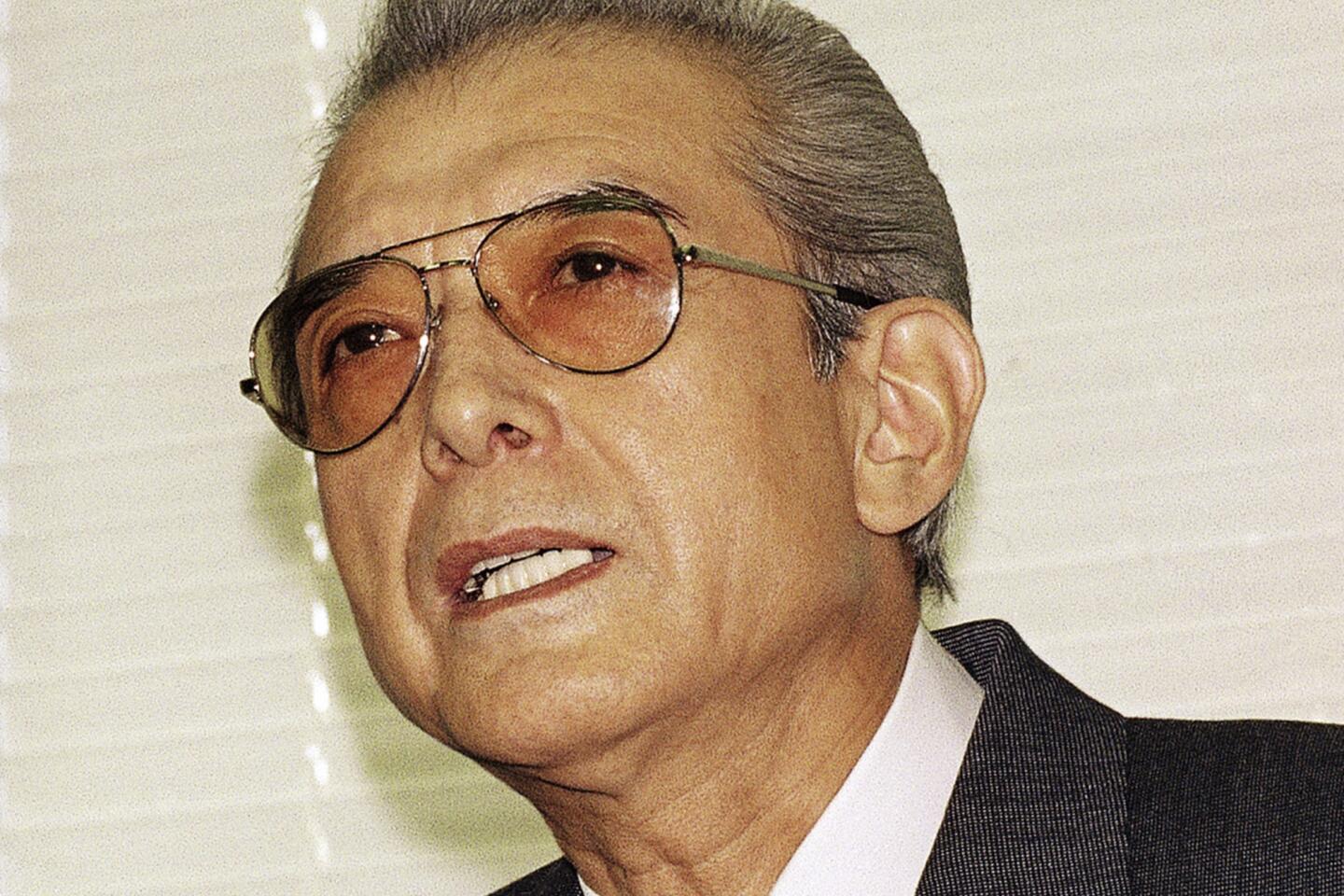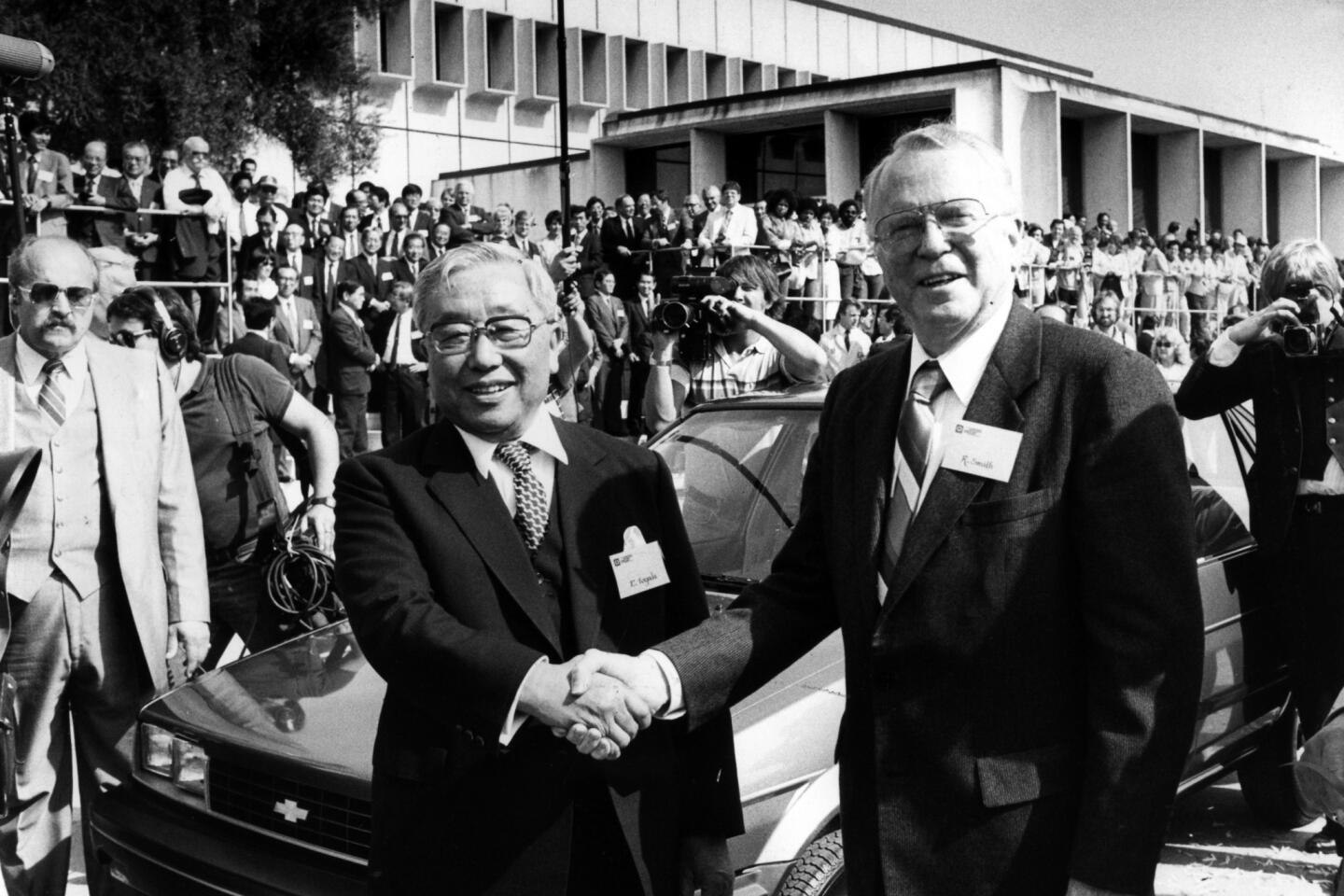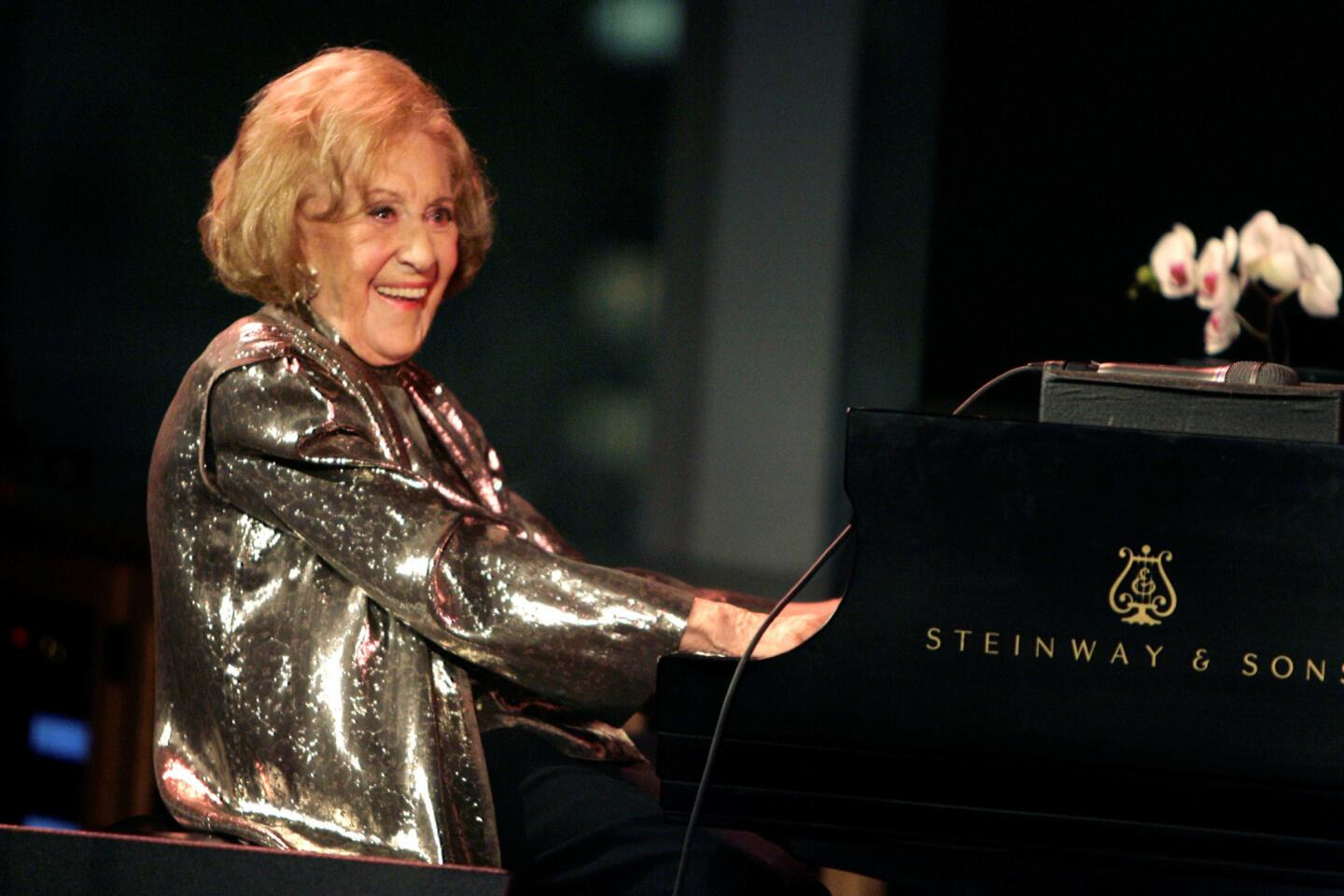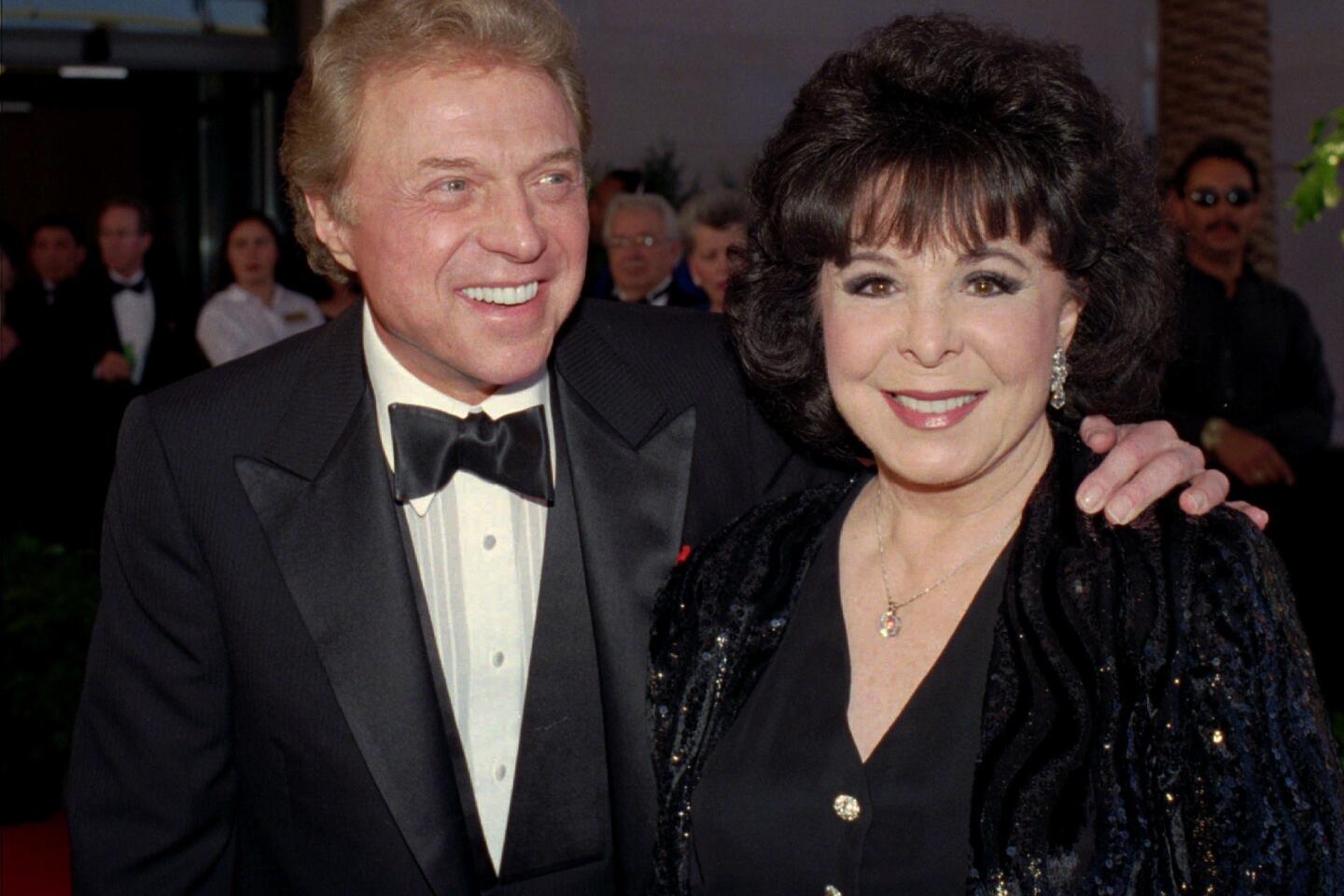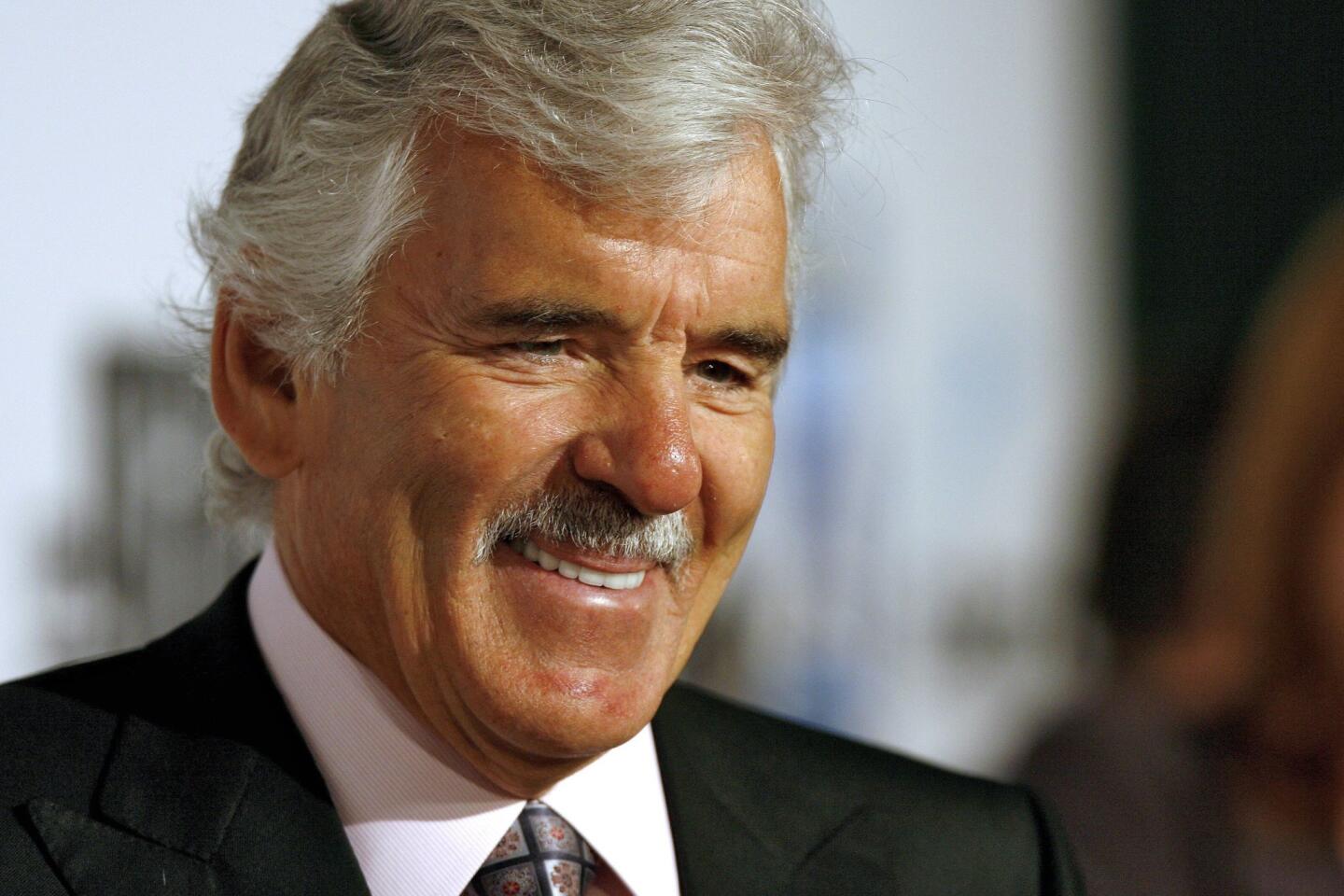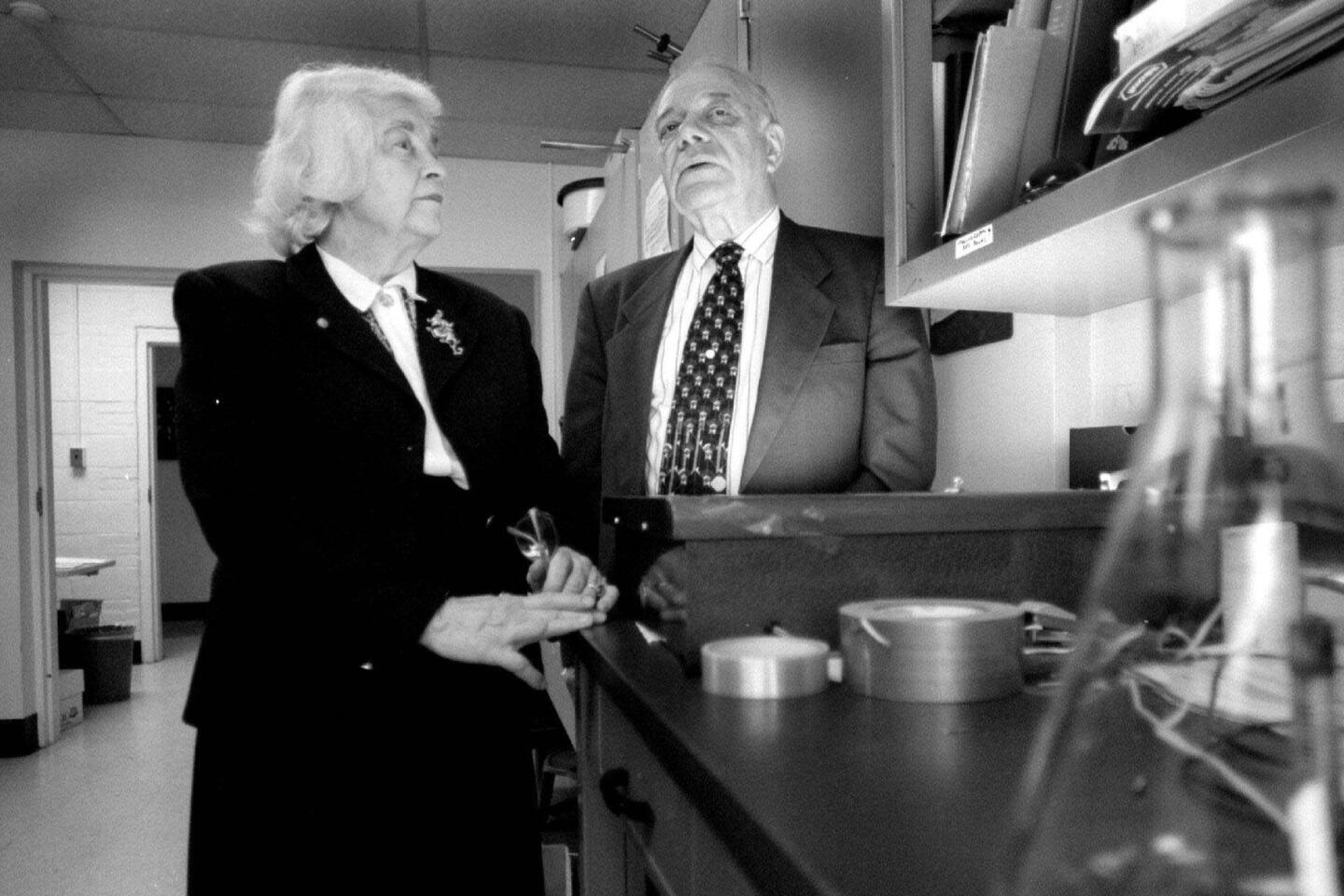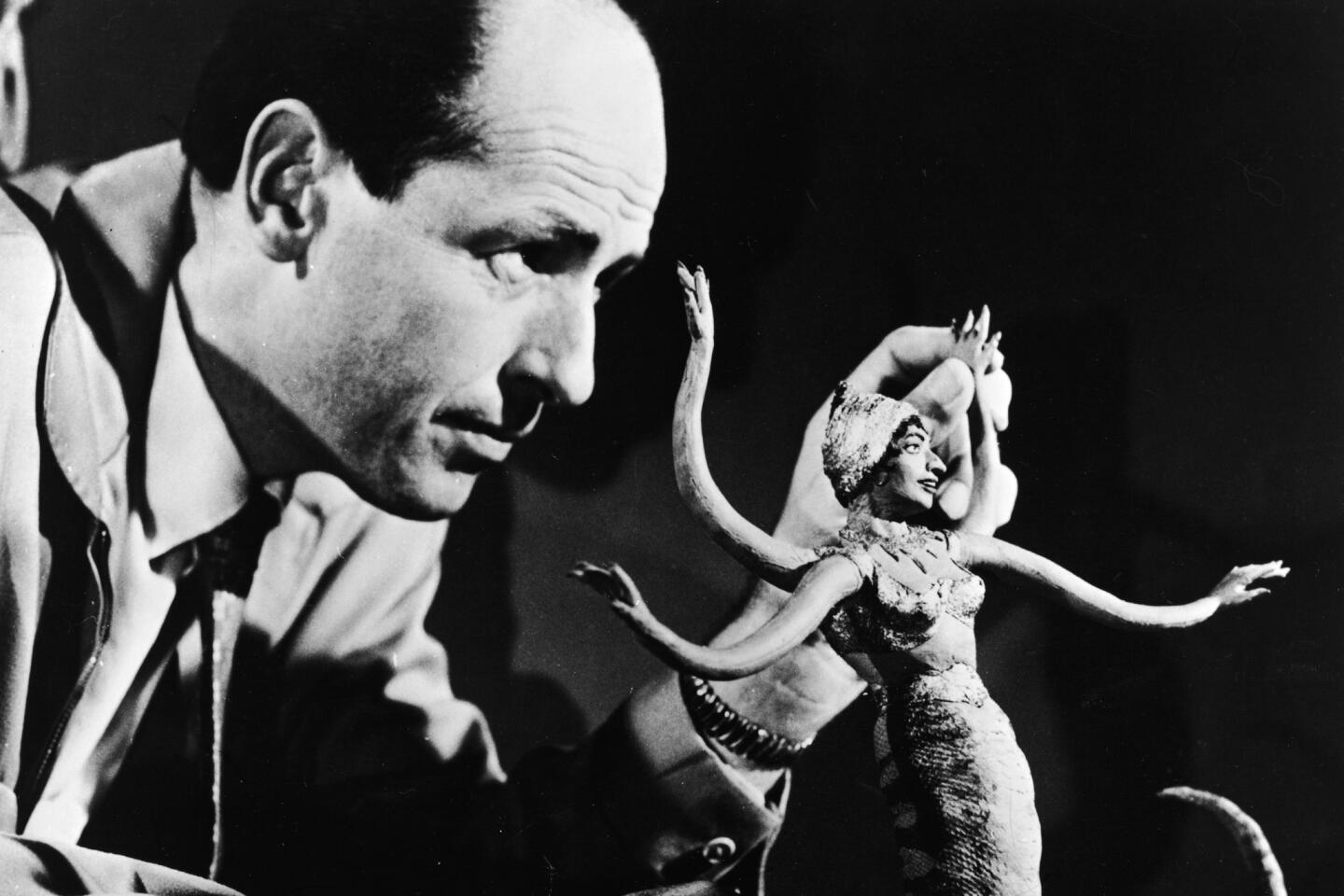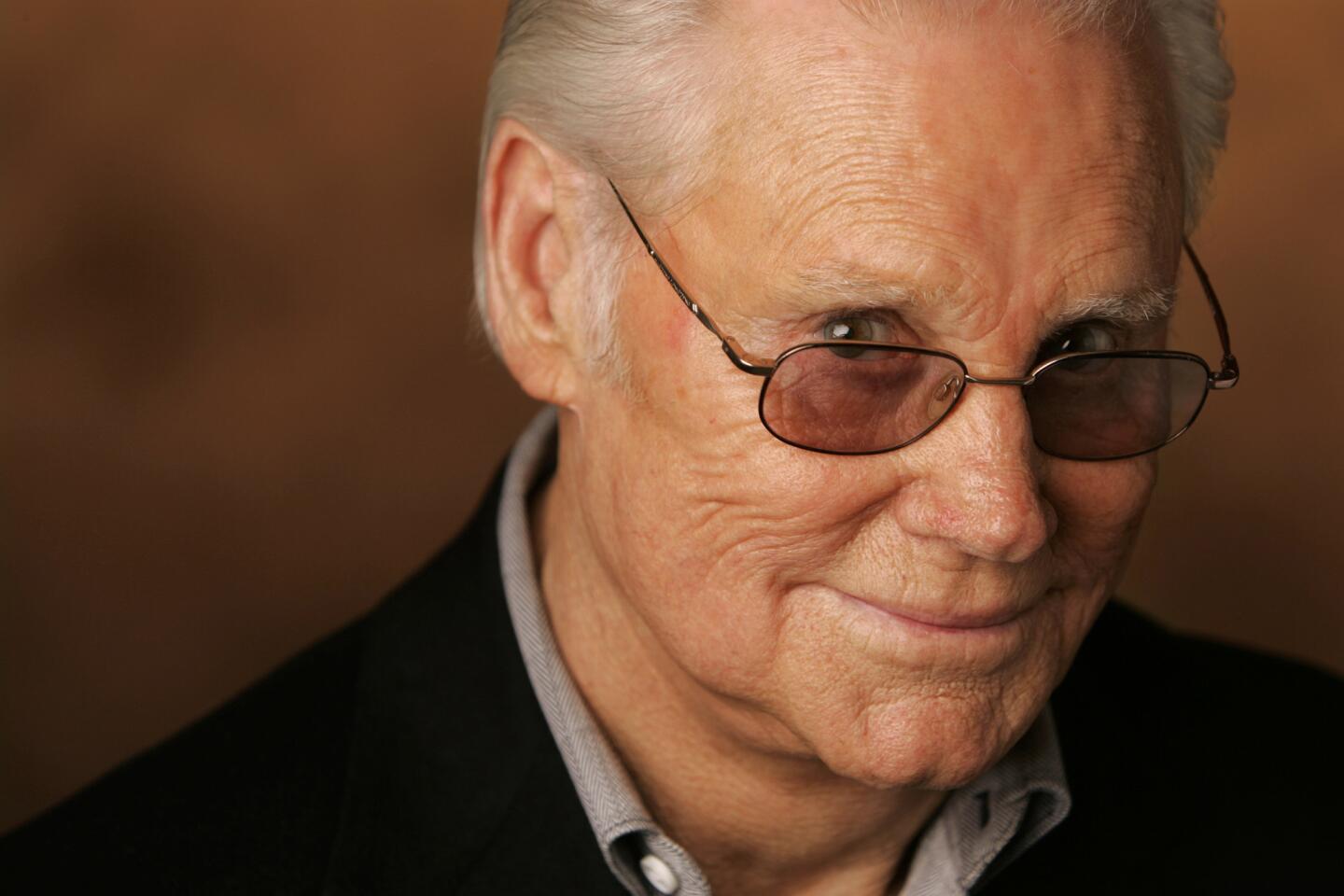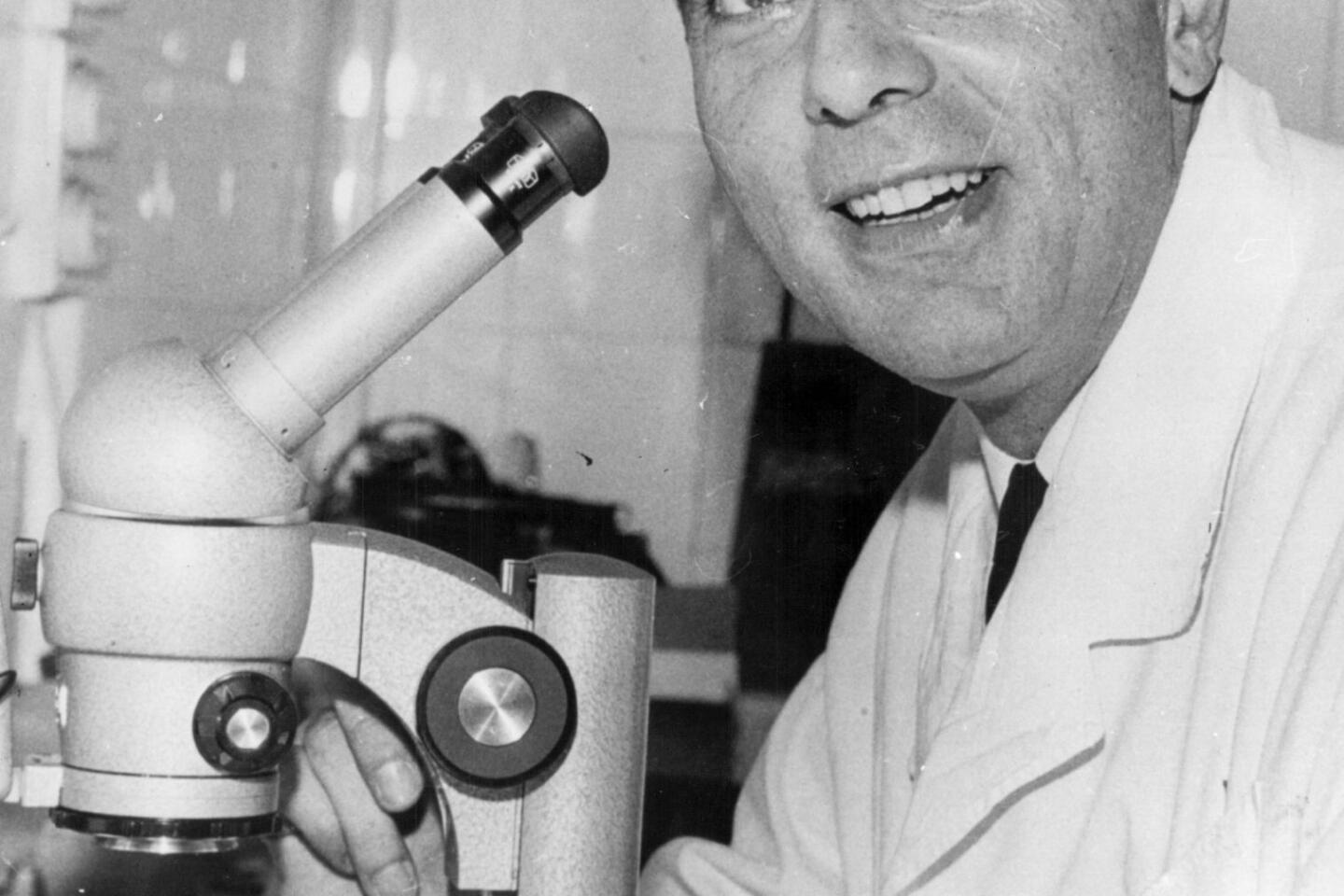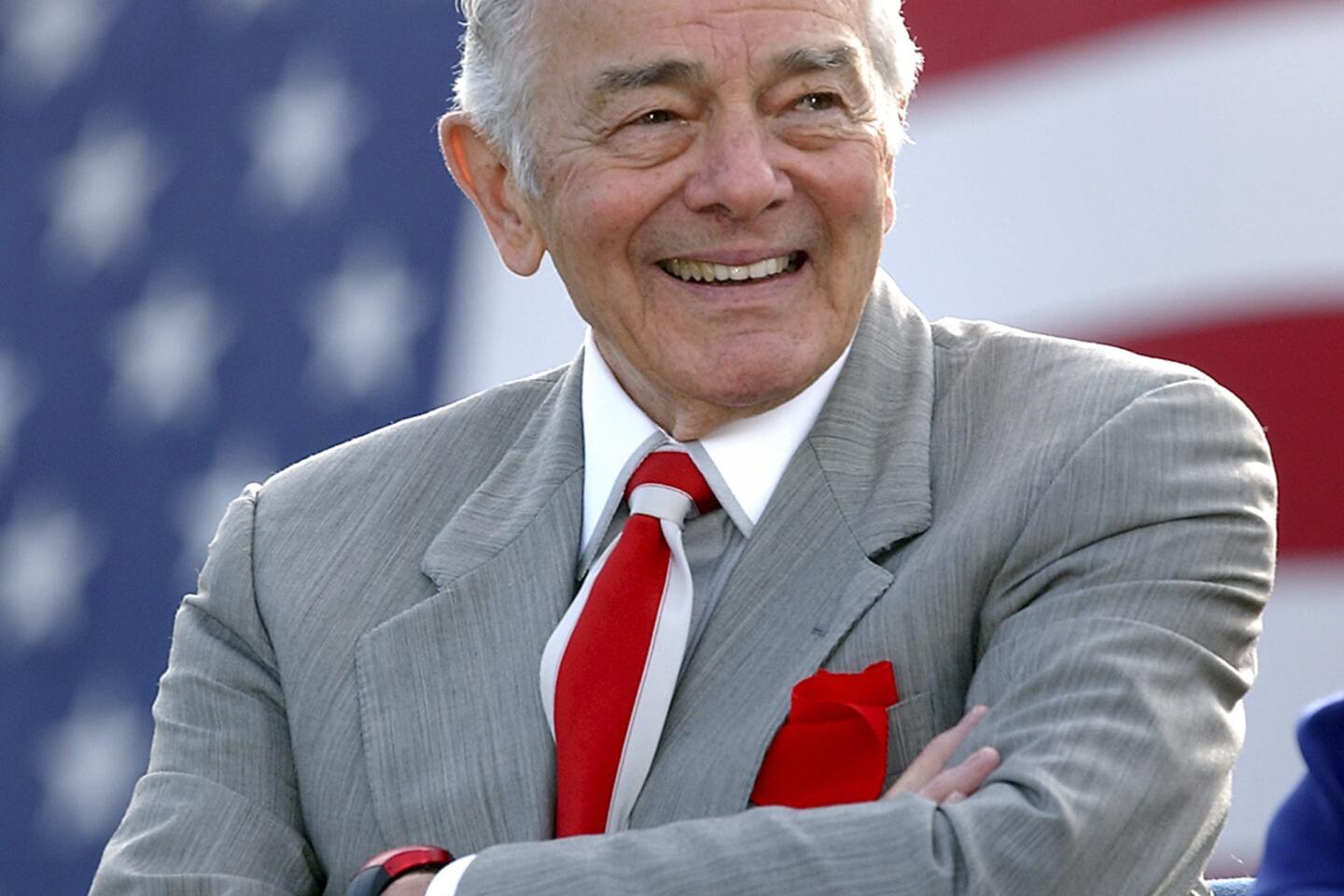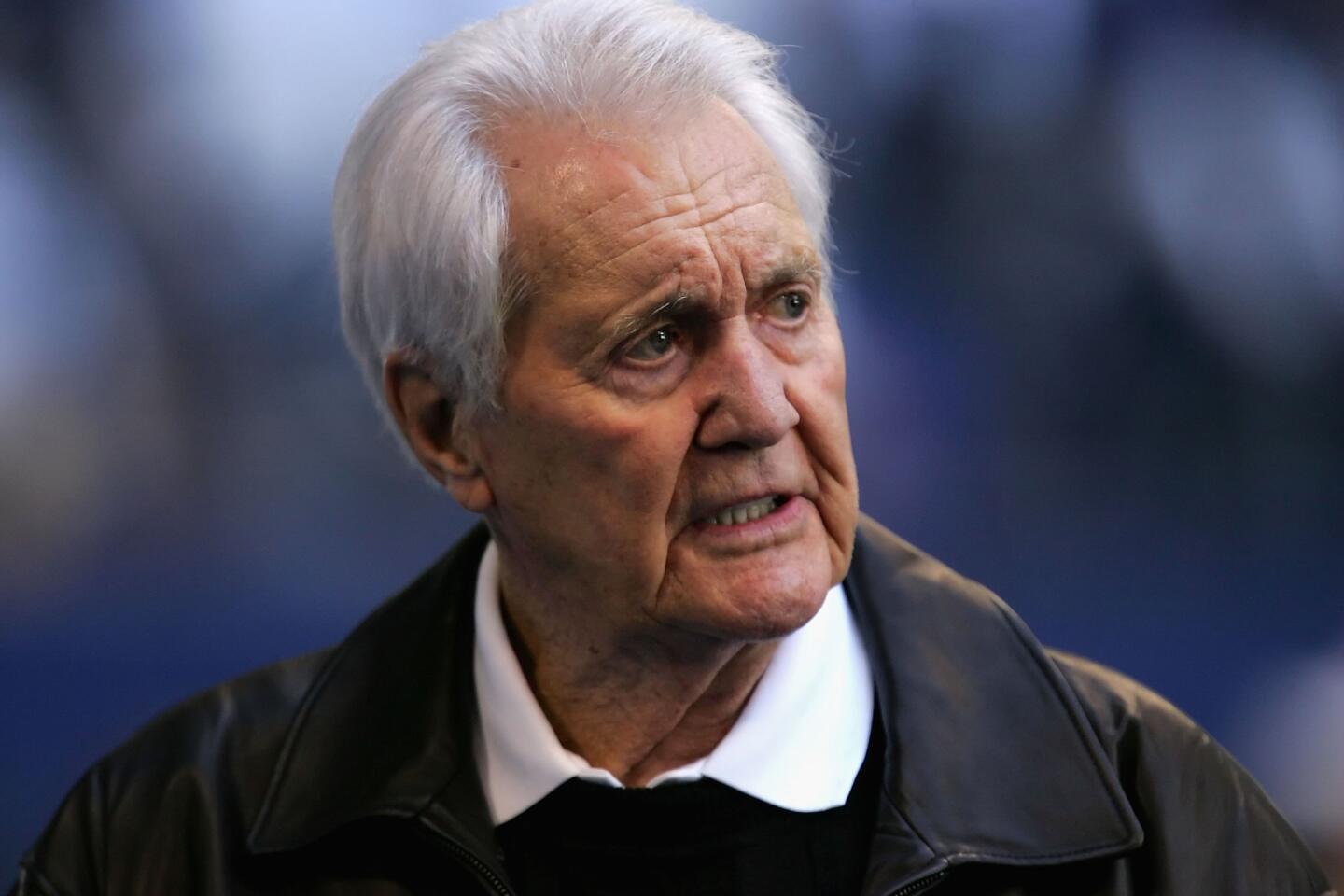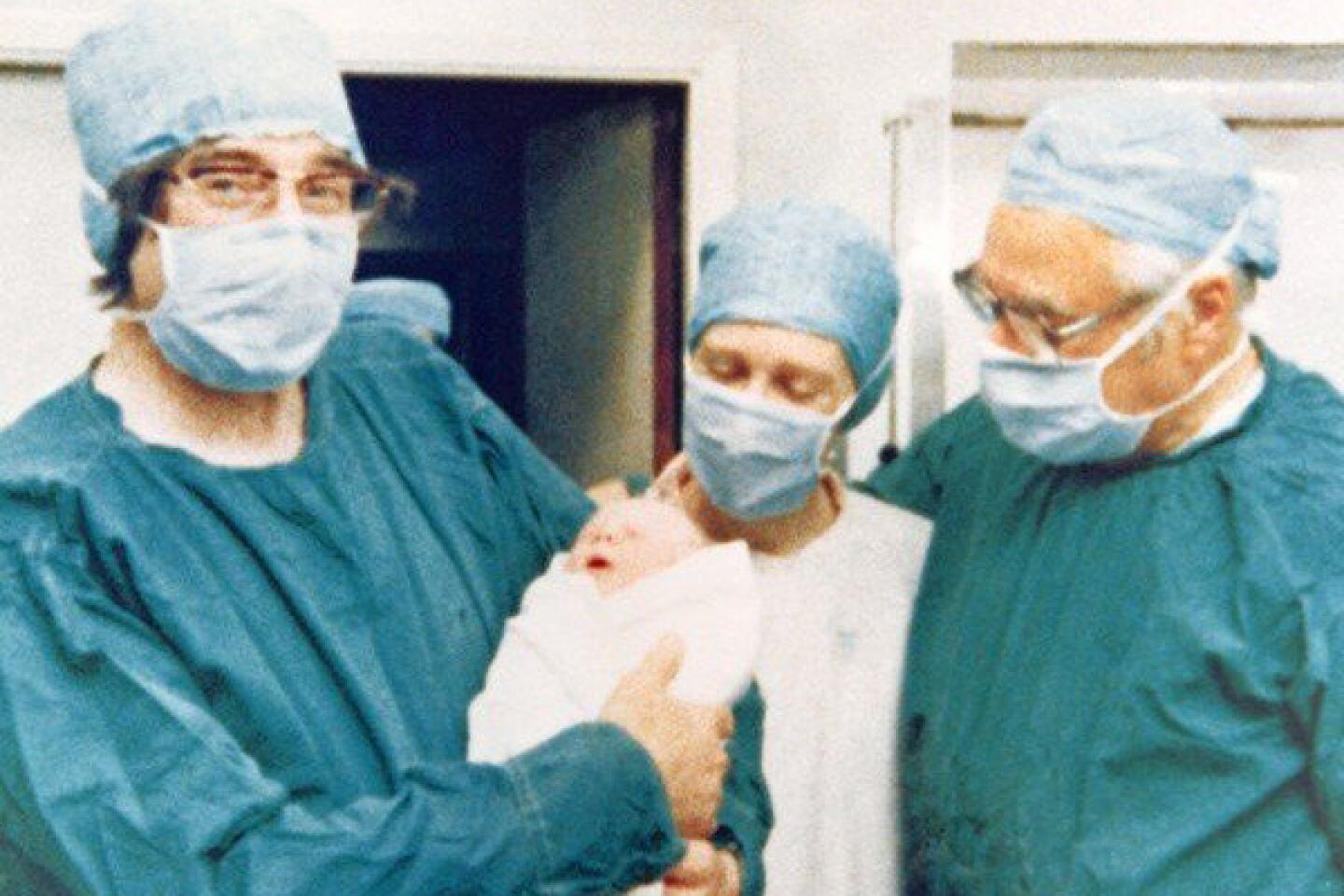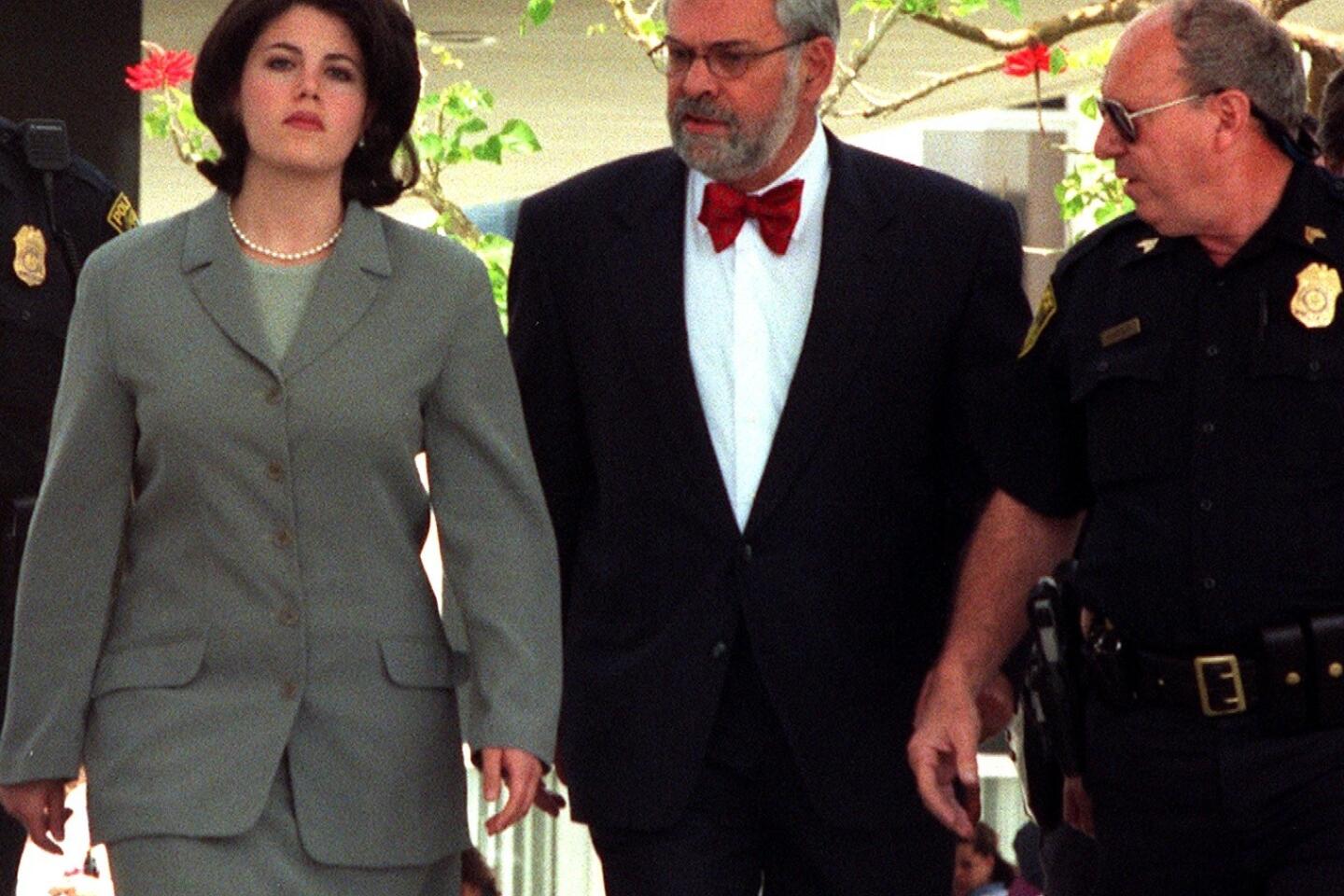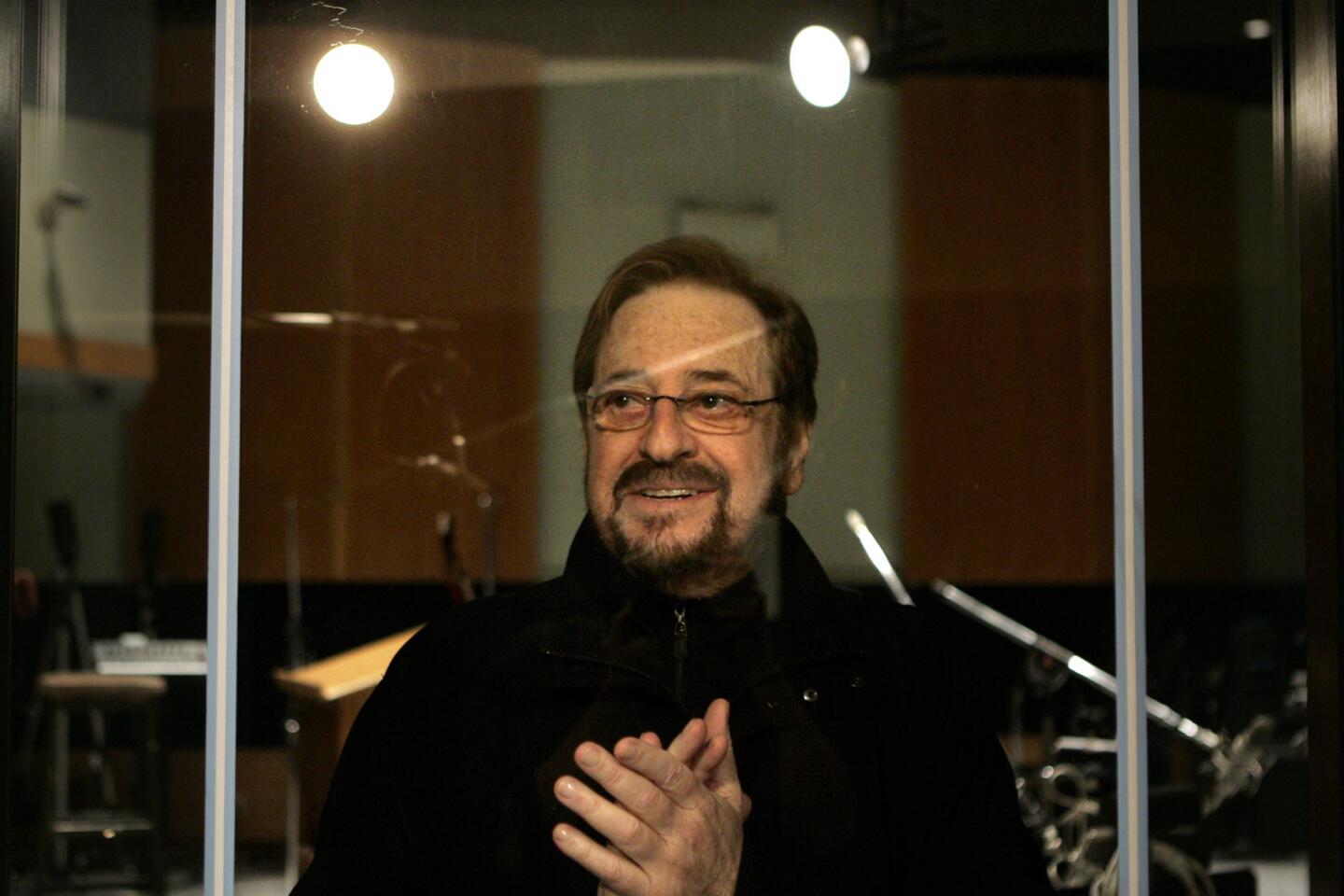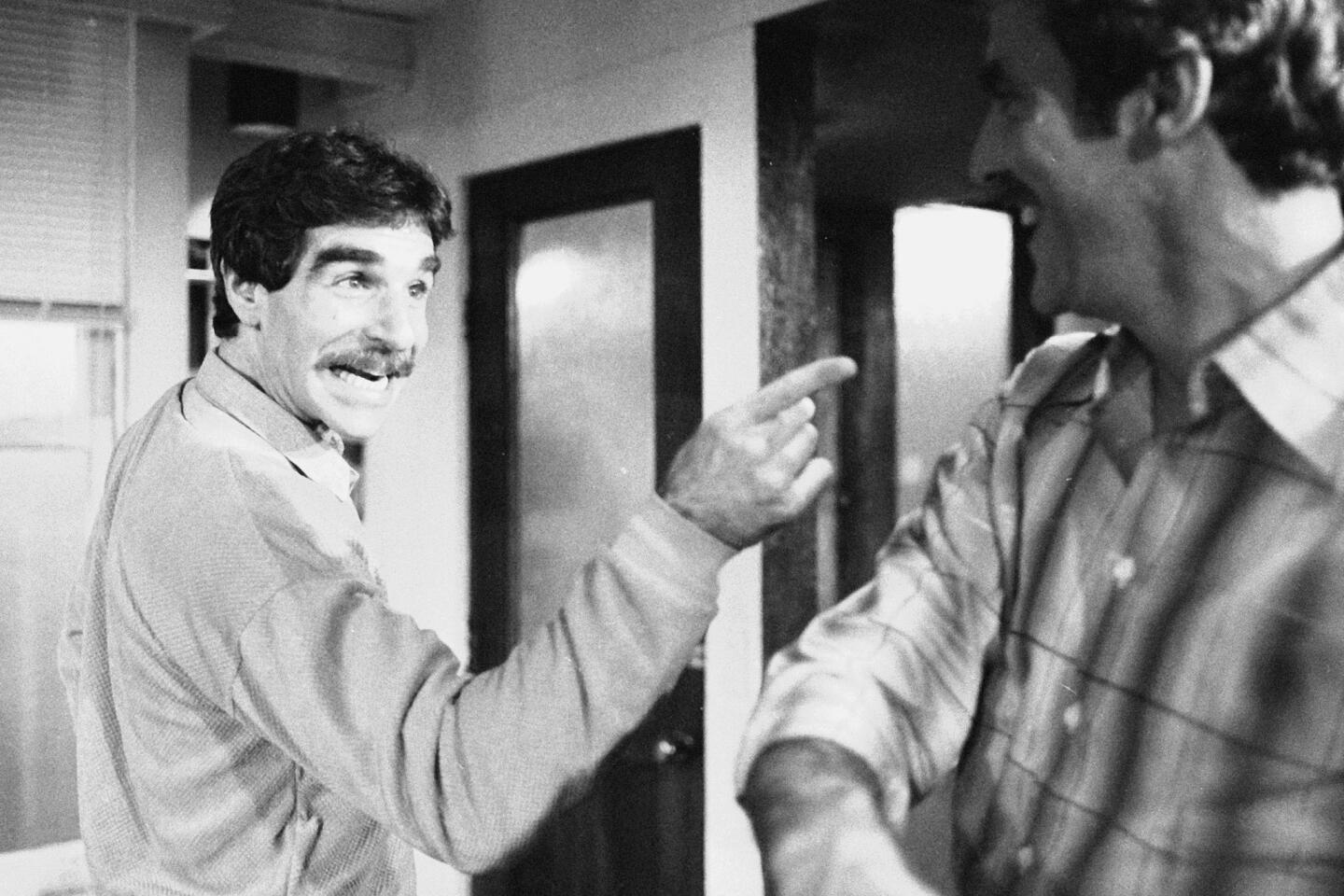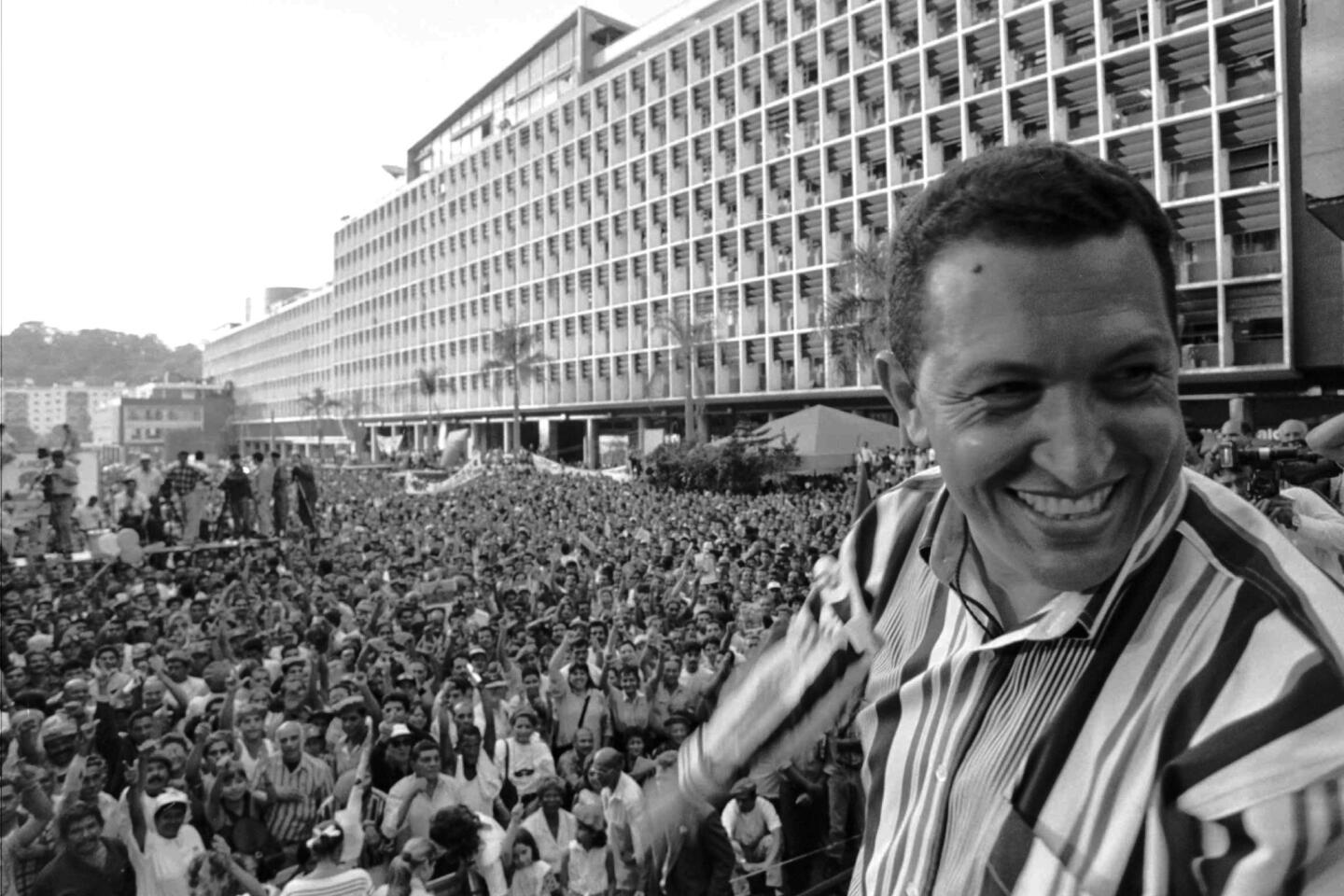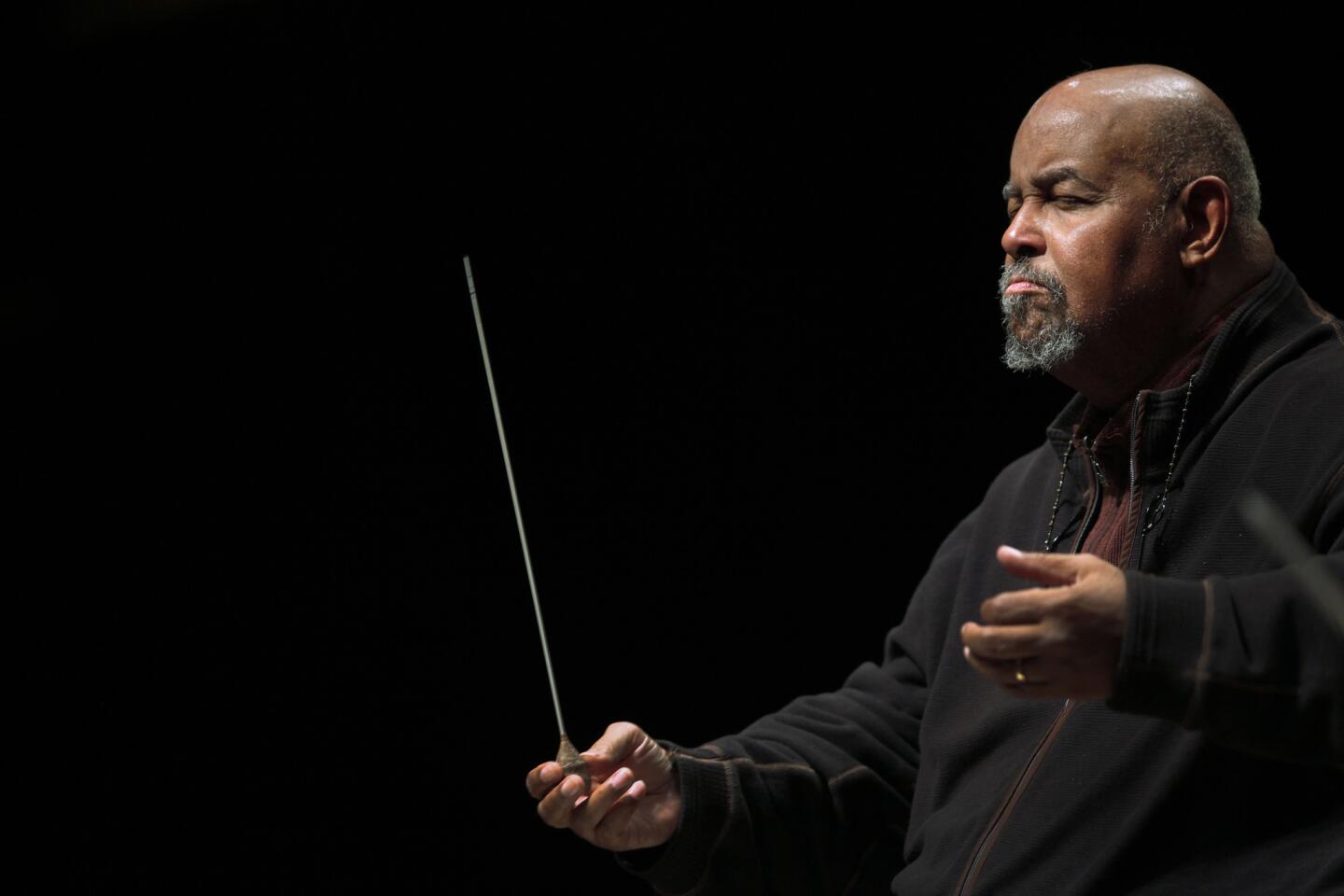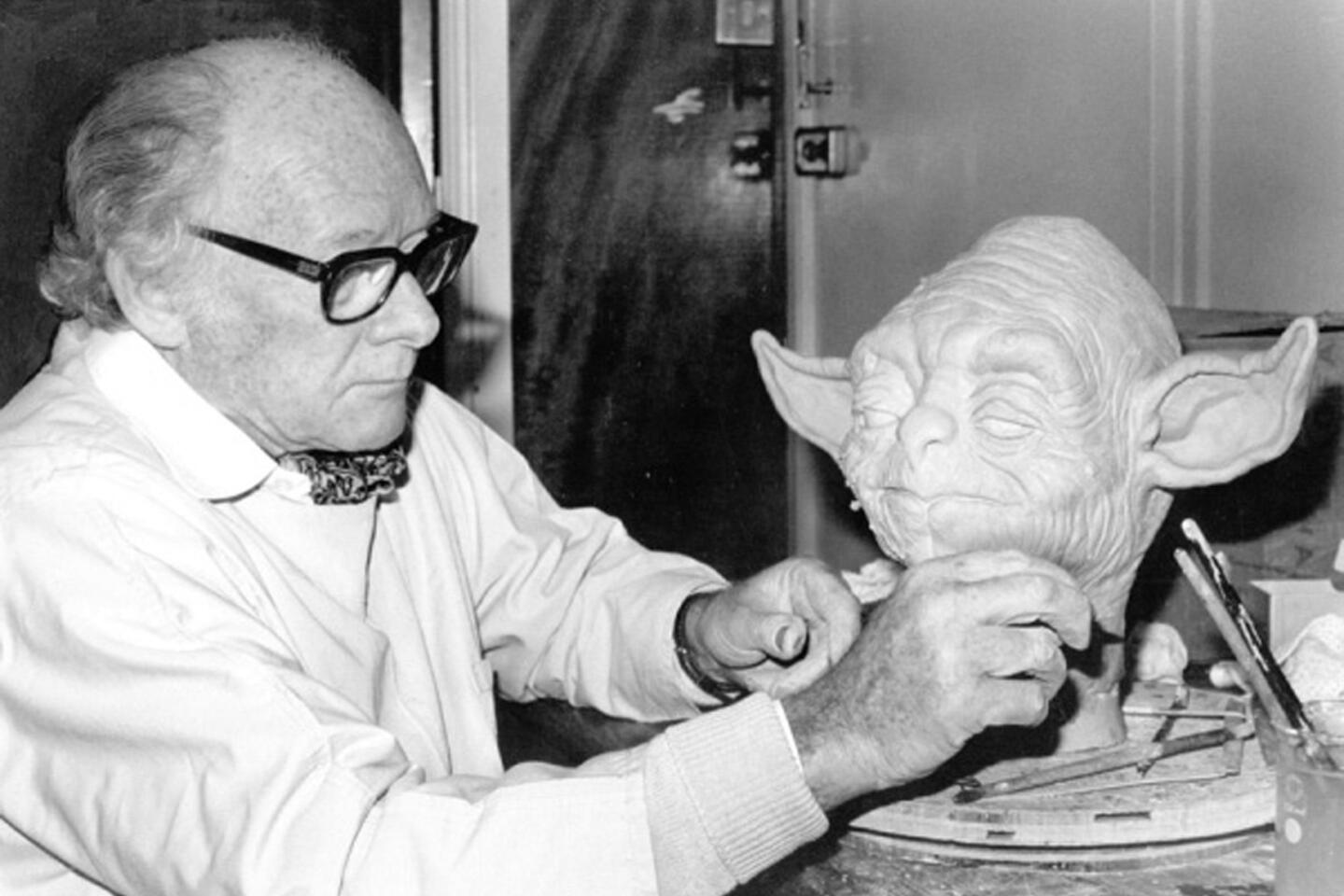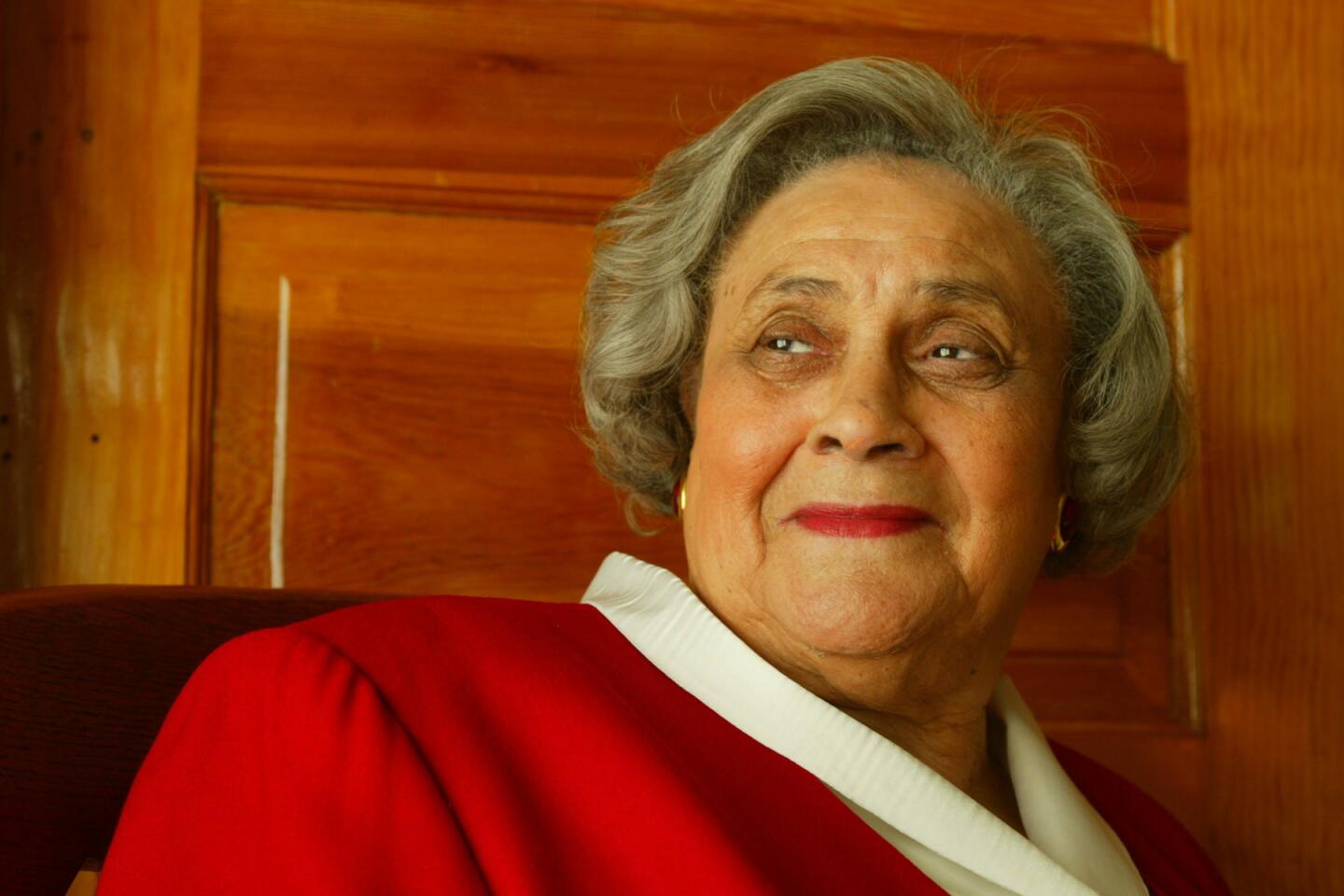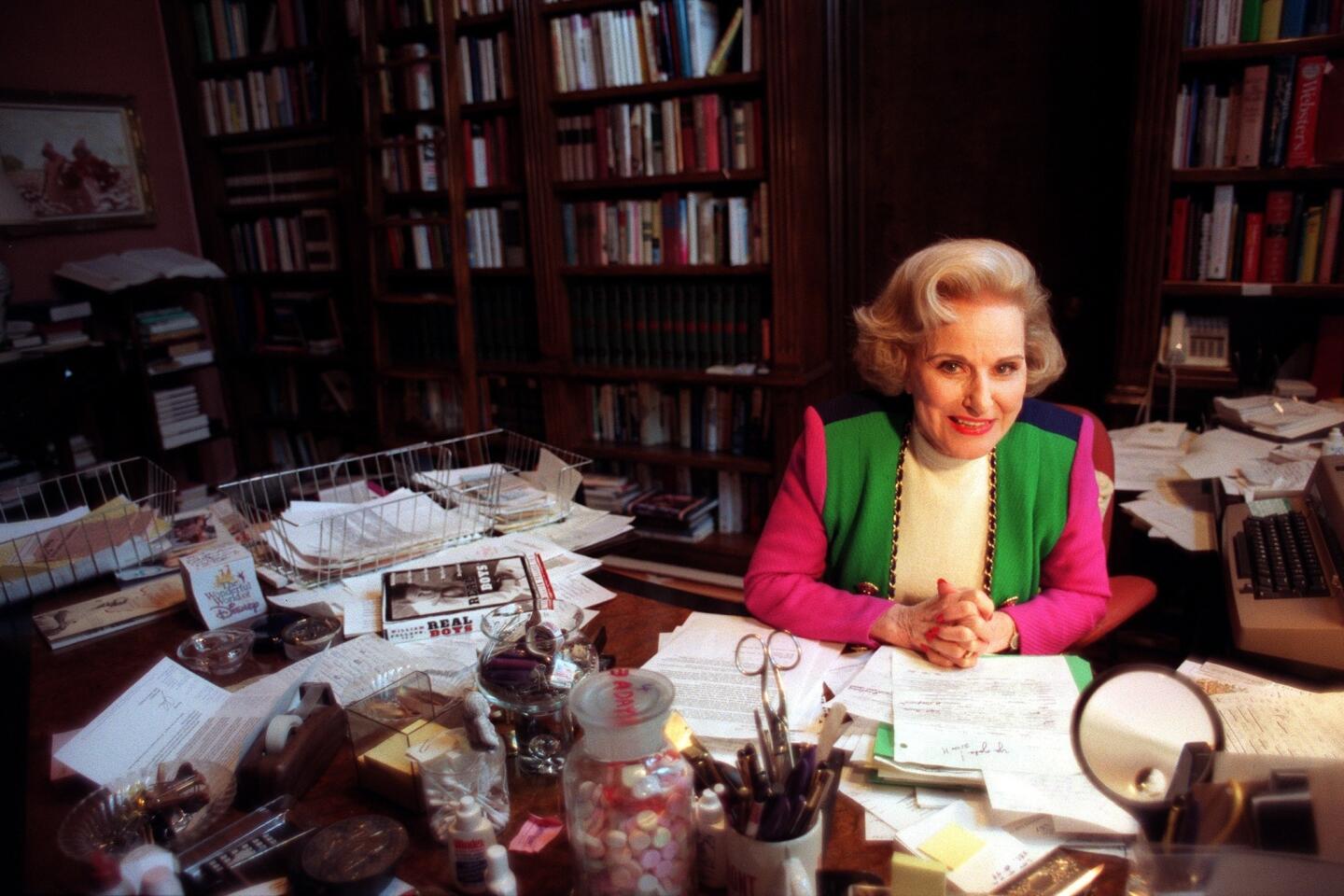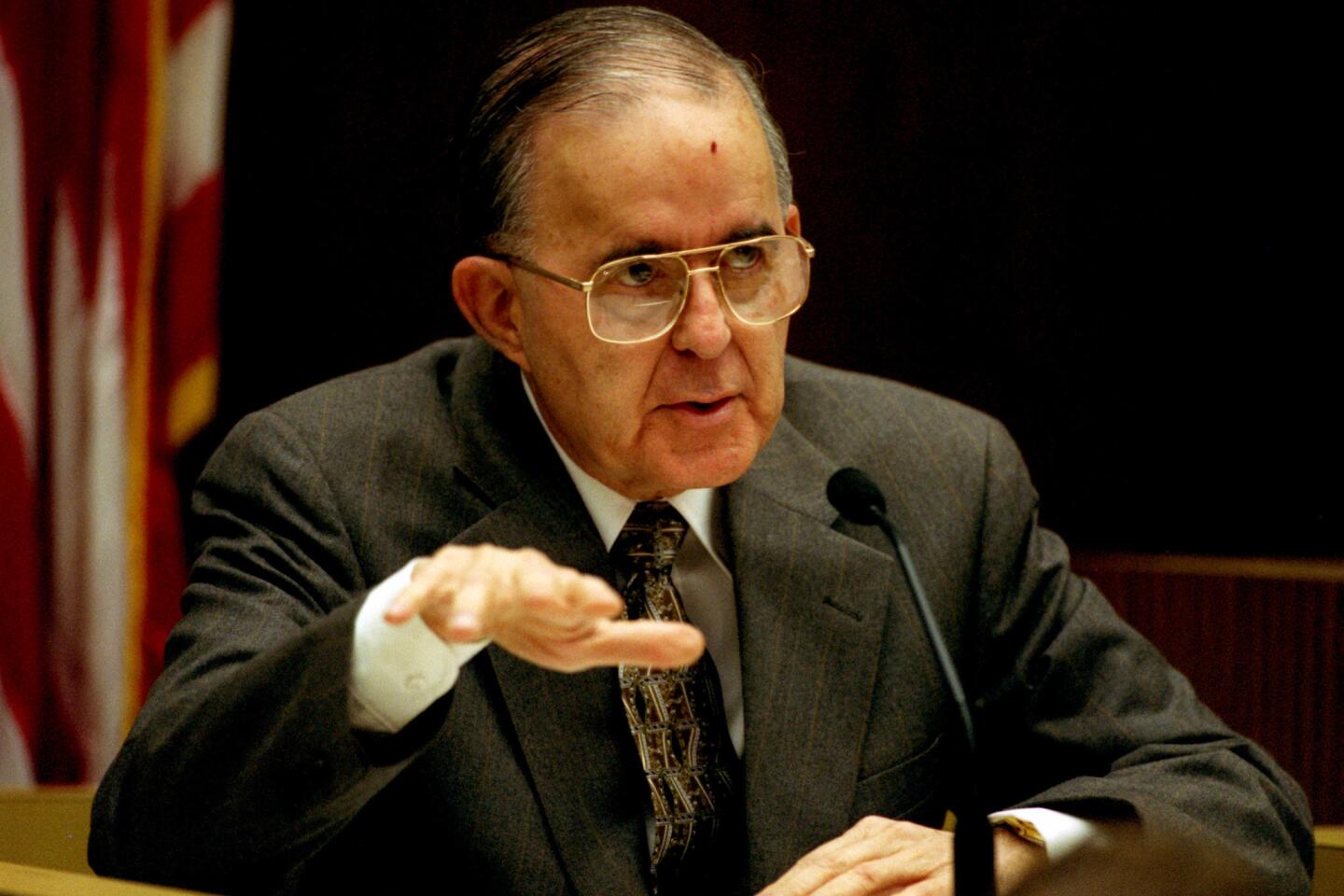Abe Baum dies at 91; decorated WWII officer
- Share via
Dog-tired, Capt. Abe Baum was snoozing on the hood of a military vehicle when he was shaken awake and summoned to a superior’s tent. With worry on their faces, his unit’s top officers were clustered around Gen. George S. Patton Jr., who had just issued a secret order for what some historians later described as one of the most ill-conceived missions of World War II.
Baum, then a 23-year-old New Yorker, would become known for brilliantly executing his general’s flawed orders. German soldiers still study the shock-and-awe tactics of Task Force Baum. But military scholars still criticize Patton for his command to liberate a prison camp deep in German-held territory — a grim spot where one of the captives happened to be his son-in-law.
Baum, who later became a garment manufacturer and salesman, died March 3 at his home in Rancho Bernardo, Calif., said his wife, Eileen Baum. He was 91 and had congestive heart disease.
PHOTOS: Notable deaths of 2013
The raid on the camp at Hammelburg, Germany, came just weeks before the war’s end.
Twenty-five of the men under Baum’s command were killed and 32 others, including Baum, were wounded. Many of his soldiers were imprisoned, albeit briefly. Patton was derided when word spread that he’d placed 300 men at risk to free Lt. Col. John Knight Waters, his son-in-law — a charge he denied. Baum maintained a soldierly silence for decades.
Born March 29, 1921, Abraham J. Baum dropped out of high school in the Bronx to help support his struggling family. He made patterns for women’s blouses, which convinced the Army that he was an engineer, he joked years later. He enlisted shortly after the attack on Pearl Harbor.
Baum fought at Normandy and suffered shrapnel wounds in a mine field. By March 1945, he was a battle-toughened officer with the 4th Armored Division but was nonetheless surprised when he was ushered into the meeting with Patton.
“I thought what the hell am I doing here?” he recalled in a recent interview in World War II magazine.
Other officers questioned Patton’s plan, telling “Old Blood and Guts” that taking Hammelburg would require at least 3,500 men — not the 300 he was demanding. But Patton had his own ideas. When told that his first choice to lead the mission had severe hemorrhoids, he ordered the man and a physician into a side room to verify the claim. Baum was next in line.
None of the top brass could dissuade Patton, who did not reveal his son-in-law’s presence at Hammelburg. The camp was 60 miles away — a dangerous trek at night, with tanks rumbling through medieval streets. Hammelburg served no strategic purpose. Nobody even knew the camp’s exact location.
Despite his doubts, Baum followed orders — spectacularly, according to historian John Toland.
“The gallant force had accomplished something quite different and even more important than Patton intended,” Toland wrote in 1965. “Every town it had passed through was in a state of confusion and hysteria,” forcing the German Army to throw a huge number of troops at a pint-size threat.
Reaching the camp, Baum found 1,500 U.S. prisoners instead of the 300 he had been told to expect.
“I was stunned,” he told World War II magazine. “I could’ve cried.”
It proved to be an academic problem as German forces closed in.
Baum, already burned by rocket fire, was shot in the groin. Patton’s son-in-law — the presumed reason for the raid — was seriously wounded. The task force’s 53 vehicles were destroyed. Within days, Allied forces arrived to liberate Hammelburg for good.
Gen. Omar Bradley, the first chairman of the Joint Chiefs of Staff, later called the raid “a wild goose chase that ended in disaster.”
Patton denied knowing that Waters, a German prisoner for two years, was at the camp. He said he was concerned that captive officers would be shot as the war ended.
After leaving the Army as a major, Baum worked most of his life in the garment industry. A 1981 book he co-wrote with Richard Baron and Richard Goldhurst raised questions that had dogged him during the raid.
When a Patton aide reluctantly let him in on the general’s secret, “a cold fury washed over Abe Baum,” the authors wrote in “Raid! The Untold Story of Patton’s Secret Mission.” “Men were dying … and more would die on the way to Hammelburg — all to bring back one man.”
If he felt exploited, it didn’t last.
“That was all over and done with as far as my father was concerned,” said Baum’s son David.
Baum became a lifelong friend of Waters, who went on to become a general. Baum and the German commandant at Hammelburg exchanged holiday cards. A couple of German soldiers invited Baum and his family to Bavaria in 2005, where, with vintage vehicles and old U.S. uniforms, they retraced the route of Task Force Baum.
Passionate about the Israeli war for independence, Baum helped recruit American veterans for the cause. Military leader Moshe Dayan met with him and, in his autobiography, credited Baum with giving him some valuable tactical tips. Baum was offered a top spot in the effort but declined, his son said: The family blouse business needed him.
Baum was awarded numerous military honors, including the Distinguished Service Cross and the Purple Heart.
An avid sport fisherman, he moved his family to Florida in 1970. To be closer to his wife’s relatives, the family moved to Rancho Palos Verdes in 1976. Baum stayed in the garment business until his retirement in 1991, when the family moved to Rancho Bernardo, north of San Diego.
In addition to his wife, Eileen, and son David, Baum is survived by daughters Susan Locker and Barbara Zoltan and another son, Eric Baum.
He will be buried with full military honors at Arlington National Cemetery.
More to Read
Start your day right
Sign up for Essential California for the L.A. Times biggest news, features and recommendations in your inbox six days a week.
You may occasionally receive promotional content from the Los Angeles Times.




